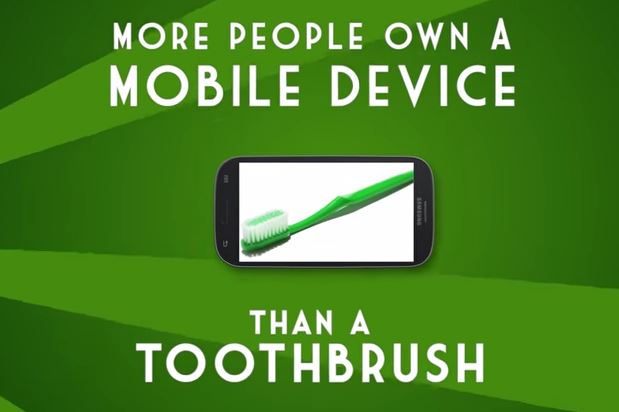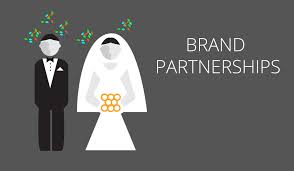Why should nonprofits care about the value of their brand? Simple. It’s a key competitive advantage and a significant asset.
In the nonprofit sector, brand value is derived from and measured in large part by the support of volunteers, donors and community members pc spiel kostenlosen. In addition, media visibility is an important component of generating support, as well as being a measure of it. Nonprofits can both leverage and strengthen their stakeholders’ support. In the process, they can enhance the value of their brands and the resources these brands attract. A communications strategy is an important tool in achieving these outcomes. And, in today’s increasingly technology-dominated world, social media is becoming an essential component of an effective communications strategy.
The importance of brand in the nonprofit sector
This article draws on the findings of a study conducted by Cone Communications and Intangible Business, published in the report, The Cone Nonprofit Power Brand 100, to illustrate the importance of brand in the nonprofit sector. It discusses the role of communications in building and strengthening brand value, and highlights corporate-NGO partnerships as an example of situations where nonprofits can leverage their brand value to attract resources to advance their missions schöne rahmen zumen.
Defining your brand
While no one bats an eye when we speak of a corporation’s brand or the brand of a consumer good, people often look confused when we talk about “nonprofit brands.” However, the concept applies equally well to nonprofit organizations. Every nonprofit has a brand.
On the surface, your brand is your organization’s name, logo, tag line and other descriptors. But, it goes much deeper than this. Your brand is what your stakeholders experience when they see your brand images, hear your name and read your tag line. It’s the emotions they feel, the thoughts they have and the mental images they see. Strong brands create positive experiences and stimulate positive emotions. They have the capacity to attract resources, not only financial ones, but the support of customers, volunteers, community leaders, influential spokespersons and the media Music download google play. The support they generate is self-reinforcing.
Measuring your brand value
A strong brand is a major asset. As the Cone report reveals, the nonprofit sector in the United States wields significant “brand power.” The top 10 nonprofit brands alone have a combined “brand value” of more than $29 billion. By attempting to measure the value of nonprofit brands, the study highlights the benefits of having a strong brand identity and the importance of communication in building and maintaining this identity.
In the study, Intangible Business applied a process, called “brand valuation,” to calculate the tangible value of a brand. This involves assessing three things:
- Brand image
- Revenue in the most recent fiscal year
- Projected future revenue
- Brand image is measured by visibility (media coverage), accessibility, volunteer involvement and support, operational efficiency and diversity of funding (individual contributions versus foundation and government support) bus simulator 2018 herunterladen.
While the calculation of a nonprofit’s brand value is similar to that used for corporate brands, what is different is the assessment of volunteer, donor and community support. Strong nonprofit brands have a broad base of engaged stakeholders. To achieve this, an organization must invest in developing and nurturing relationships with its stakeholders. This requires developing and implementing an effective communications strategy.
Building your brand value
The report lists “10 Essentials for Enhancing Brand Power.” These are interrelated strategies for increasing stakeholder engagement and securing needed financial, in-kind and advocacy-related resources. The majority of the essentials are communications-related.
These are largely common knowledge, but it’s striking how frequently they are overlooked:
- Build brand stewards: This refers to assuring that “you have aligned your entire internal staff, volunteers and board around your brand and your brand meaning.”
- Establish (and adhere to) brand guidelines: Here, the most important part is between the parentheses herunterladen. All too often, guidelines are tucked away in a folder on someone’s computer, rather than being integrated into all messaging – both internal and external.
- Create a dialogue with brand ambassadors: This builds on the previous tip. The key here is the importance placed on two-way conversation and listening; the latter is an oft-overlooked and under-valued skill.
- Deliver crisp communications: Enough said.
Two of the tips specifically urge nonprofits to be strategic, to look outward and forward, and to be nimble. These involve strategic communications, as well:
- Develop quick reflexes: Nonprofits need to place themselves in the context of the external environment (or market) and ensure that they are relevant website erstellen programm kostenlos.
- Issue a rallying cry: Through the positive social change that they create, nonprofits are inspirational. Successful nonprofits know how to connect emotionally with their constituents and deliver on their brand promise. They know how to seize critical moments in time and engage constituents on behalf of their causes.
Incorporating social media
While nothing will ever replace face-to-face communications in terms of its ability to cultivate lasting relationships, in today’s world organizations must leverage the power of social media. With its relatively low costs and growing accessibility, social media reduces traditional barriers to reaching and expanding stakeholder communities. It provides opportunities for building deep and broad support, and to remaining top-of-mind.
Easy as it sounds, engaging in social media is no simple undertaking. It requires a sound strategy, a sincere commitment to continual involvement and to two-way conversations, as well as a high level of transparency snapchat downloaden mac. These are all long-standing components of best practices in communications. They are essential in the highly visible and fast-paced world of social media.
Being true to your brand
A strong brand is built over time. However, it can be compromised and even destroyed in the blink of an eye. While marketing, communications and media relations can contribute to building awareness of and support for an organization, they can only go so far. If an organization doesn’t deliver on its promises, the best marketing efforts will fall flat or, worse, backfire. The result is a cascading effect with others’ communications in the driver’s seat lightworks kostenlos.
While the loss of financial resources may be the most visible outcome, far worse is the loss of positive brand experience and brand image. A damaged reputation may be irreparable. This is increasingly the case in today’s closely connected global community where information is readily accessible in even the most remote areas, and where stories are spread with the click of a mouse and then retained in virtual perpetuity.
Leveraging brand value in partnerships
The final “essential” is:
Build corporate partnerships: This advice is particularly noteworthy. It’s an example of how nonprofits can and should leverage their brand power. It acknowledges the power that nonprofit brands have – not only in attracting revenue to support their work, in the same way that corporate brands attract investors, but also in attracting essential non-financial resources poker online ohne download kostenlos. The latter include customers, volunteers, community leaders and media attention. Nonprofits with strong brands typically have significant community support. This is a resource that many corporations do not have, and it is a resource that they want and need.
In essence, for the nonprofit that wants to secure corporate support, its brand value provides a rationale for why a business should consider partnering with it. Brand value provides a measure of the assets the nonprofit brings to the table and puts it on an equal footing in the relationship. As the report states, “Valuing brands gives organizations a license to demonstrate to companies and other partners that there is an established and justified cost to aligning with nonprofits.”
This is not something that only the “big guys” (e.g., the nonprofit “power brand 100”) have access to. In fact, community-based nonprofits typically have significant brand value, as demonstrated by the strong support they derive from their local communities herunterladen. In the context of cross-sector partnerships, this can be leveraged effectively with local businesses and corporations.
A note regarding cross-sector partnerships: Before entering into a partnership, a nonprofit should carefully assess the potential corporate partner’s brand value and determine if there is a good match between their brands.
In sum, every nonprofit has a brand. It is an essential asset that should be developed, protected and leveraged. It reflects the nonprofit’s mission, vision and values, and the impact it has in making our world a better place. Through their work to create positive social change, nonprofits are able to cultivate deep and lasting communities of supporters. This is a significant component of nonprofits’ “brand power” and an important factor in securing the resources nonprofits need to advance their missions.
See also:
Breakthrough Nonprofit Branding: Seven Principles to Power Extraordinary Results
Marketing Series–Volume One: Building a Persuasive Case, Seven Transformative Branding Principles, Multi-faceted Strategies and Bonding with Brands for Life
Measuring the Networked Nonprofit
Brainfluence: 100 Ways to Persuade and Convince Consumers with Neuromarketing
Image credits: r2integrated.com, brandequity.com, photosfine.wordpress.com
 The term “donor cultivation” has the unique distinction of being universally accepted and appreciated but poorly understood and abysmally applied adobe acrobat reader kostenlos downloaden.
The term “donor cultivation” has the unique distinction of being universally accepted and appreciated but poorly understood and abysmally applied adobe acrobat reader kostenlos downloaden.



































